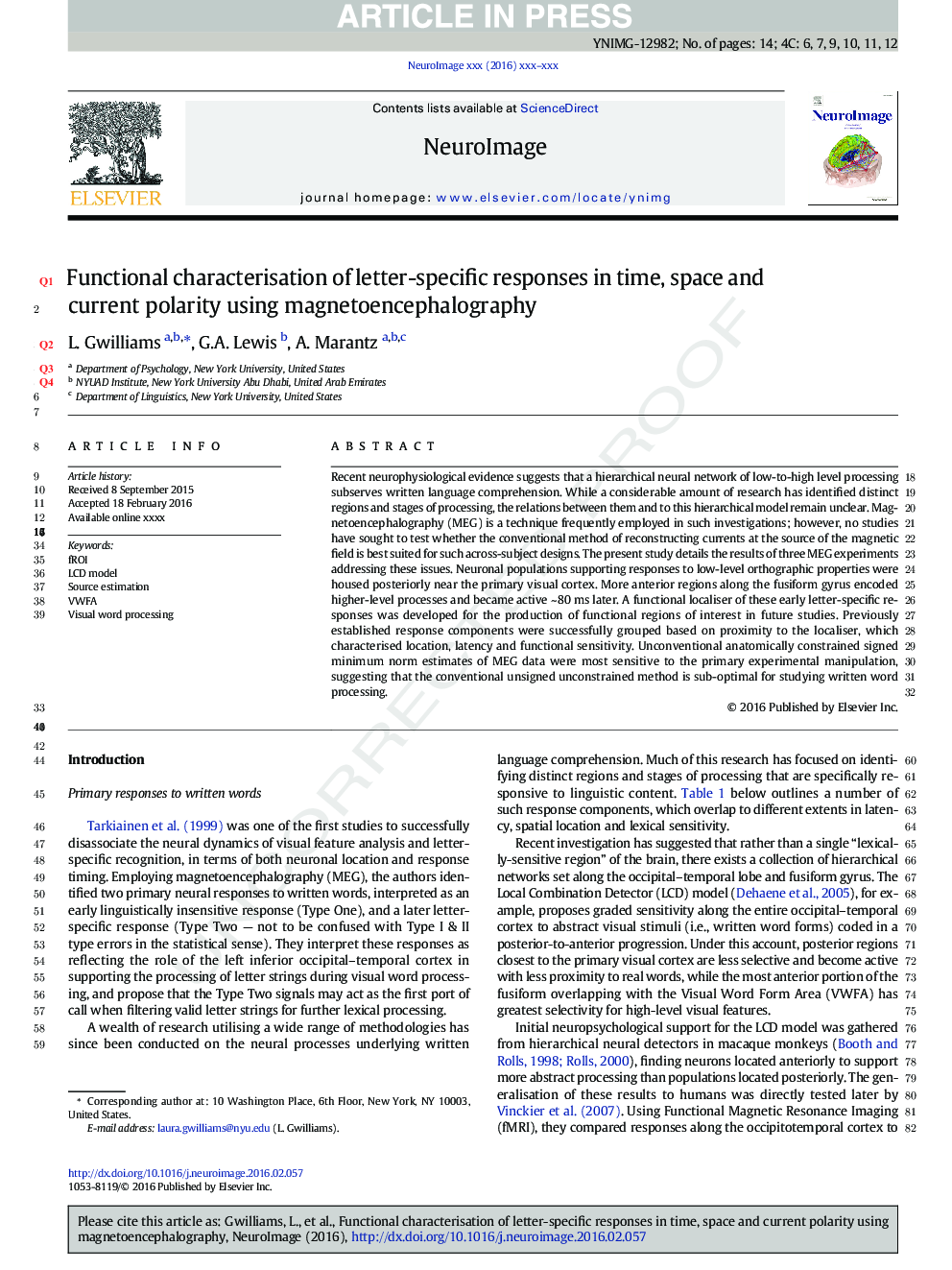| Article ID | Journal | Published Year | Pages | File Type |
|---|---|---|---|---|
| 6023734 | NeuroImage | 2016 | 14 Pages |
Abstract
Recent neurophysiological evidence suggests that a hierarchical neural network of low-to-high level processing subserves written language comprehension. While a considerable amount of research has identified distinct regions and stages of processing, the relations between them and to this hierarchical model remain unclear. Magnetoencephalography (MEG) is a technique frequently employed in such investigations; however, no studies have sought to test whether the conventional method of reconstructing currents at the source of the magnetic field is best suited for such across-subject designs. The present study details the results of three MEG experiments addressing these issues. Neuronal populations supporting responses to low-level orthographic properties were housed posteriorly near the primary visual cortex. More anterior regions along the fusiform gyrus encoded higher-level processes and became active ~Â 80Â ms later. A functional localiser of these early letter-specific responses was developed for the production of functional regions of interest in future studies. Previously established response components were successfully grouped based on proximity to the localiser, which characterised location, latency and functional sensitivity. Unconventional anatomically constrained signed minimum norm estimates of MEG data were most sensitive to the primary experimental manipulation, suggesting that the conventional unsigned unconstrained method is sub-optimal for studying written word processing.
Related Topics
Life Sciences
Neuroscience
Cognitive Neuroscience
Authors
L. Gwilliams, G.A. Lewis, A. Marantz,
